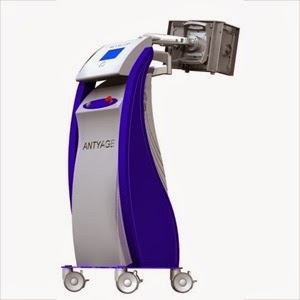Rosacea can
take a variety of forms, but the most common is a surface rash on the skin, red
in colour and may feel dry to the touch. Sometimes confused with acne, rosacea
often shows on the skin as an inflammation and reddening on the nose, forehead,
cheekbone or chin areas. Inflamed capillaries on the skin’s surface give the
complexion a red, blotchy or bumpy appearance it is usually to be found on the
cheeks, forehead, chin and nose. It is often accompanied by small visible
veins, and a bad attack can lead to pimples or small bumps just beneath the
surface of the skin. Sufferers also report watery or puffy, hay fever-type
eyes. Women are more prone to rosacea but men can more prone to a condition
known as rhinophyma, which is an enlarging of the nose due to thickening of the
skin. Rosacea can be uncomfortable too, producing a stinging or burning
sensation.
The
cause of rosacea is unknown.There are several factors to take in to account when trying to find the trigger.
Diet is thought to be a significant factor, although food triggers tend to vary
from person to person. Common culprits are cheese, yoghurt, citrus fruit,
chocolate, vanilla, soy sauce, yeast extract, vinegar, avocados, spinach - and
foods high in histamine or niacin. Red wine and alcohol in general can also trigger
it, as well as spices and foods that are physically hot: soup, coffee and so
on. Stress is a significant factor, as is the weather: wind, cold and
especially sun even exercising can make it worse. There is a belief that hair follicle mites
called Demodex Folliculorum which are
normal inhabitants of all our faces may cause rosacea In certain situations
they are found in higher numbers than normal and greatly aggravate the skin.
This results in redness around the follicles, small red bumpy appearance to the skin. The skin feels rough
to the touch, like fine sand-paper which leads the affected individual to do
the very thing which aggravates the condition further, apply more heavy
moisturisers which is counterproductive. Clients report extreme sensitivity and
intolerance to most topical agents and skin care products.
How to
get rid of it
Sufferers
will always be prone to attacks; but it is possible to manage it. Part of the
battle is learning to recognise the triggers, and then rigorously avoiding
them. As for treatments, they really do vary from person to person: some, but
not all, sufferers will respond to antibiotics (these tend to be the ones who
find their rosacea is accompanied by pimples) or products that contain sulphur
(a natural antibacterial agent). Laser treatments can address broken veins, and
there are many topical creams that can reduce the appearance of inflammation.
Some people find that a daily antihistamine helps.
Daily
care
In terms
of skin care, it is important to look after the skin, that is to say keep it
clean and moisturise regularly. Avoid anything that causes a stinging
sensation, and try to keep things as simple as possible. An excellent range to
try is a Hungarian skincare regime called Eminence; this is free from
pesticides and other harmful chemicals, and it has also been formulated to
eliminate most allergens The Mineral wash is brilliant for rebalancing the
skin, while the Yarrow oil is both soothing and hydrating and balances the
skin. Rosehip tonic contains rosehip juice: hydrates and improves the
appearance of skin; is an antioxidant
and a source of vitamin C also Salicylic Acid which sloughs off dead skin cells to smooth skin’s
surface Stone crop gel is effective for the treatment of pigmented, reactive,
sensitive and dehydrated skin types;
Thermal springs moisturiser is
perfect for balancing oily and problem skin types. Skinceuticals gentle cleanser, retexturising serum, serum 10, redness neutraliser, Face cream are suited to Rosacea skin.
Sunscreen
is important daily.
Rosacea
sufferers should also invest in a good daily sunscreen: Skinceuticals do a very
nice 100% mineral filter, broad spectrum UVA/UVB protection which repairs and
improves skin’s barrier function: provides all day hydration in a nourishing.
- comforting texture
- paraben & fragrance-free
Make-up
It is
hard to conceal rosacea completely, if your skin is rough and dry, you are
better correcting the high colour rather than the texture. Use a concealer and light makeup.
Supplements
You
might also find that boosting your intake of essential fatty acids helps: try
full spectrum Omega or Bio care 3.6.9. (All available from a health store)
Treatments
With
rosacea sufferers, it’s all about calming and soothing the skin. Facials are
good, avoid anything too mechanically abrasive; the Jet peel is very effective
as is Antyage LED light Therapy. Salacylic peels can also have excellent results
– a proper consultation with a skilled Therapist is very important. Eminence
Customised to suit the skins needs on the day is another effective option.
Intense Pulsed Light is generally recommended by dermatologists as the best way
of treating the redness and broken veins.
The Jet peel.







No comments:
Post a Comment